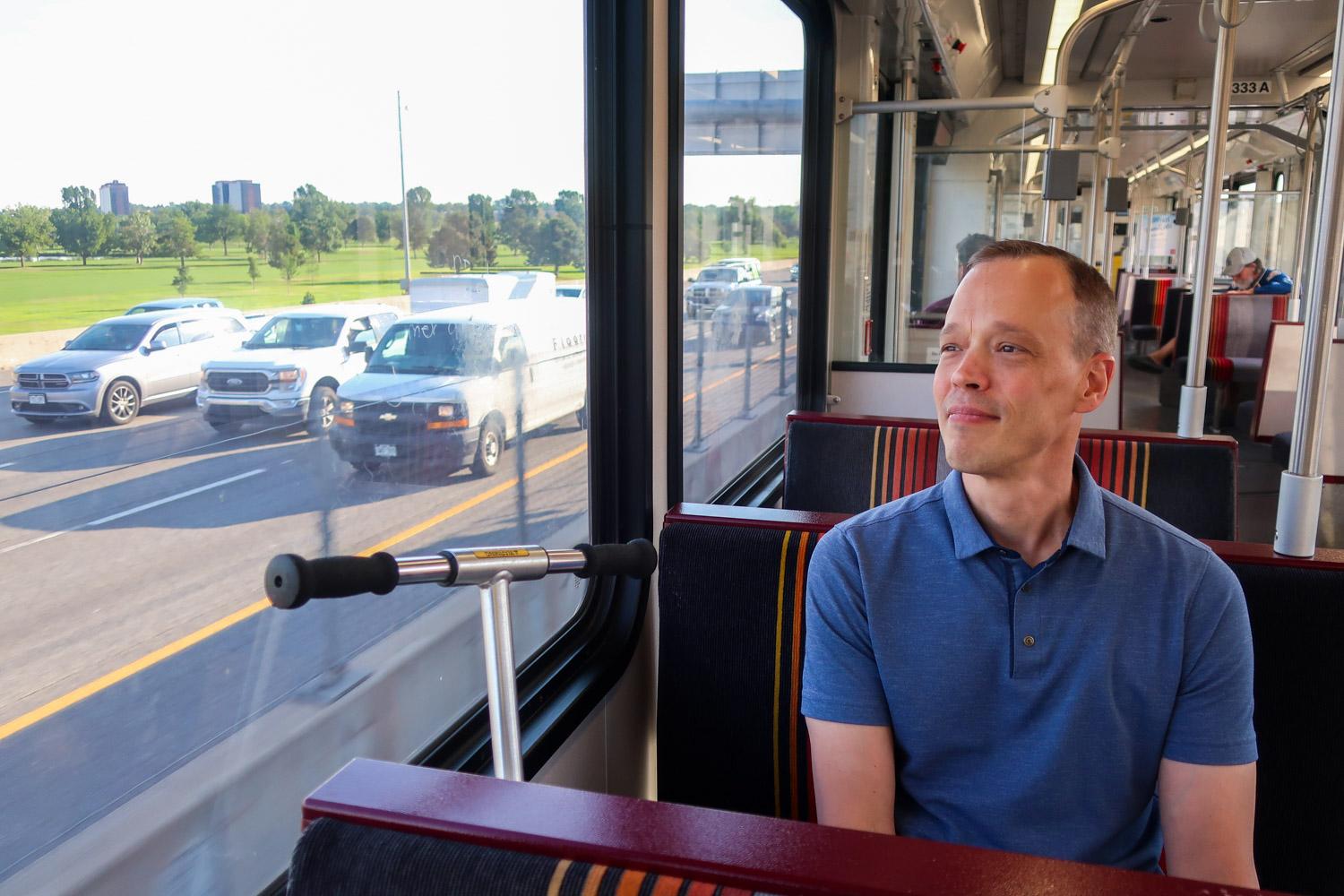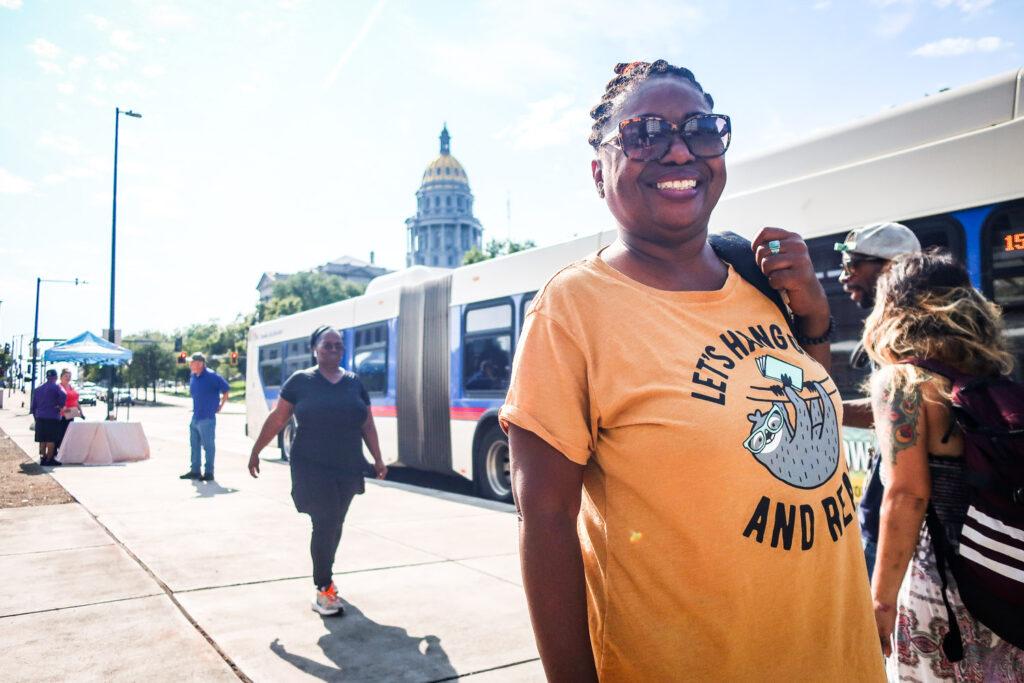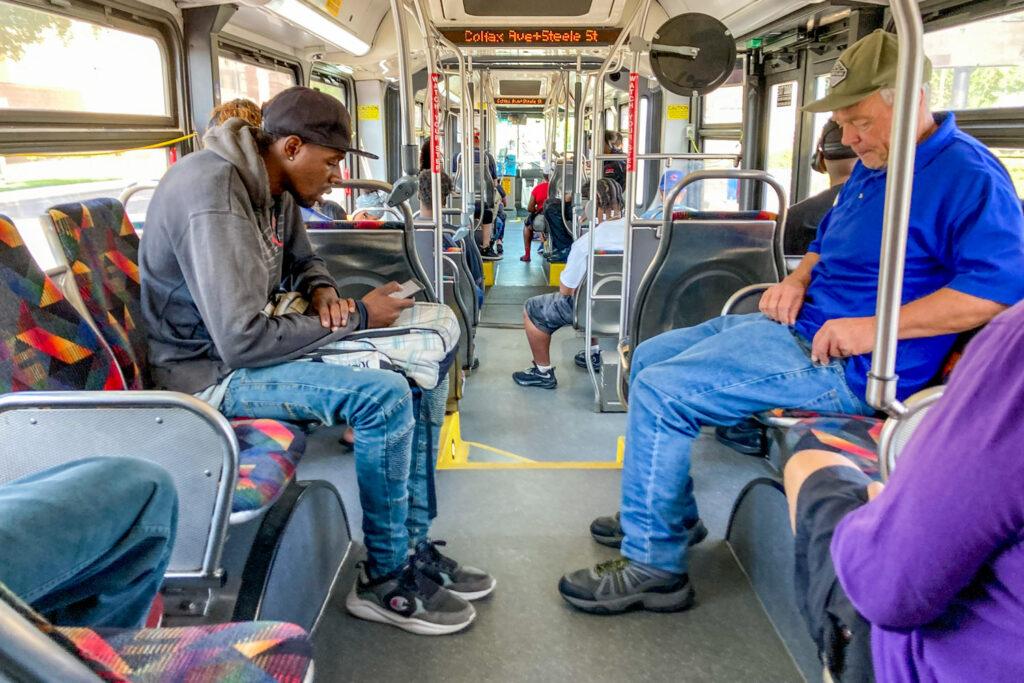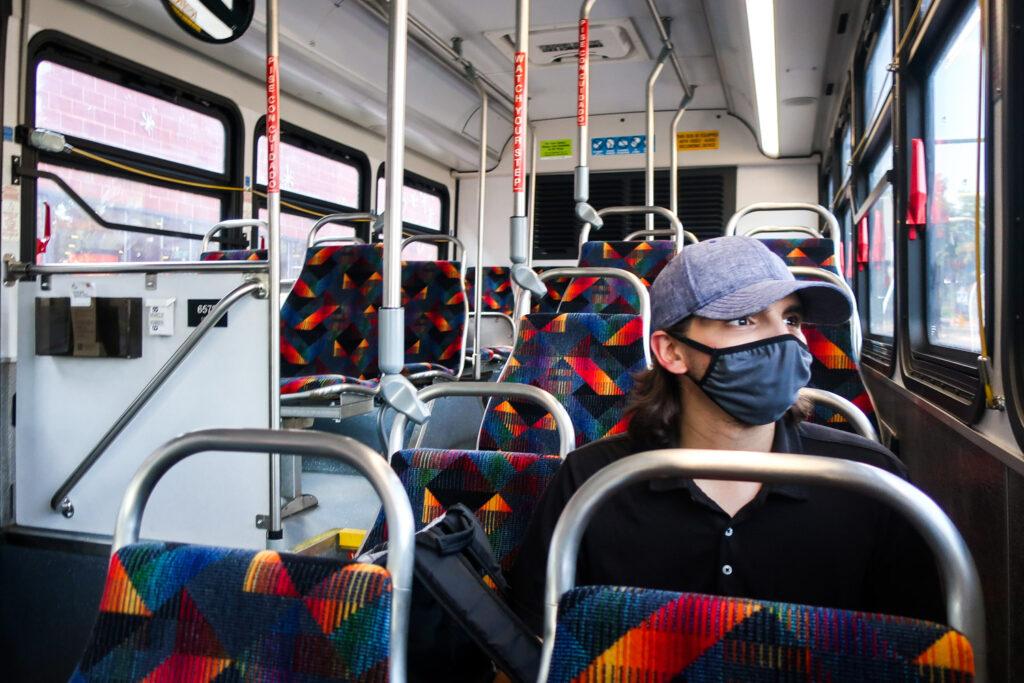
With a scooter in one hand and a large insulated mug of water in the other, David Bledsoe was ready to give public transit a try.
The resident of Denver’s Central Park neighborhood didn’t like his 45-minute drive to work or the damage he knew his car — in conjunction with millions of others on Colorado’s roads — was doing to the state’s air every day.
And he had one more reason to try transit: It’s free this month across much of Colorado.
So early on Monday morning, he boarded the Regional Transportation District’s R Line light rail train for the first time. About 30 minutes into the journey, as the train sped past slow-moving traffic on Interstate 225, he broke into a wide smile.
“This is where I’m usually sitting every day,” he said. “Going past this feels really good.”

Can free fares help air quality and RTD ridership?
Bledsoe’s $3 fare was mostly covered by a Democratic-sponsored bill that spent $28 million to incentive drivers to leave their cars behind by making public transit free during August 2022 and 2023, when sunshine and hot weather typically make air pollution worse.
The program’s success depends on how many people like Bledsoe are lured out of their cars over the next four weeks. RTD does not yet have ridership figures for Monday morning; it and other agencies will track data and later report it to the state legislature.
Anecdotally, ridership levels appeared normal Monday morning to this reporter over nearly four hours traveling on two light rail lines, the A Line commuter train to Denver International Airport, and three local bus lines in Denver.
But the effort faces an uphill battle: RTD’s own history with free fares from the 1970s (as well as more recent experiments) and its ongoing struggle to add staff and service suggests the pilot program could have only a limited impact.
Another huge obstacle: Colorado’s communities have sprawled outward over the last 70 years, with wide highways and large parking lots that make driving much easier and faster and have helped relegate public transit to an underfunded niche mode of travel. Just 4 percent of Denver metro residents use transit to get to work, while 73 percent drive alone, according to recent Census figures.

That was clear as the R Line glided south toward Bledsoe’s workplace near the Denver Tech Center.
Hundreds of cars were visible on I-225 through suburban Aurora at any given moment early on Monday. Bledsoe’s light rail car, meanwhile, never had more than a half-dozen passengers in it for the entirety of its rush-hour trip from Peoria station to Lincoln station.
“My prior public transport experience is usually in very packed trains,” said Bledsoe, who used to live in London. “This is very nice and quiet.”
The R Line, which is RTD’s only rail line that doesn’t directly serve any densely populated neighborhoods or employment centers, has consistently underperformed in terms of ridership since it opened in 2017. But on Monday, it appeared to have won a new convert.
“Everything’s gone really well this morning,” Bledsoe said after he stepped off the train. “I’ve been really pleased.”
The rail commute was only a little longer than his typical drive, Bledsoe said. And the cost of a monthly RTD pass, which runs $114, is roughly what he pays in gasoline and maintenance on his car.
“I think I’ll be back” tomorrow, he said. “I’m going to continue to do it, especially during August. And then I’m going to evaluate — I think this is something I could become addicted to.”
Bledsoe then crossed the Interstate 25 pedestrian bridge, clicked his foldable scooter into position, and rolled the last quarter-mile toward work.

Meanwhile, city buses seemed to be running much fuller.
RTD’s rail system was mostly designed to serve white-collar workers trying to get in and out of downtown during business hours — and many rail lines have seen ridership fall dramatically during the pandemic as office workers continue to stay home.
But many buses that travel relatively dense city corridors have seen ridership stay fairly steady in that time, especially those that serve low-income neighborhoods.
Most seats were filled on an eastbound No. 15L bus on East Colfax at about 9 a.m. Monday. Wanda Pervish was on her way to Walmart and said the free fare program would save her $114 this month.
“That’s extra groceries, or the electric bill,” she said.
Vincent Morales had just left his overnight shift at a Safeway on Colorado Boulevard and was riding the No. 40 bus north toward home at about 8:30 a.m. The free fares didn’t pull him out of a car — he already takes the bus to and from work most days. But they were most certainly a big deal for him.
“I spend like $30 a week on bus passes. So that’s at least $120 this month that I’m going to be saving,” he said. “That helps a lot.”
Morales said even though he’s not a regular driver, he hopes more people ditch their cars for transit. He also wants state lawmakers to expand the program, both to help the environment and people like himself.
“It’s a really good thing that they’re doing,” he said. “I really do appreciate it.”








